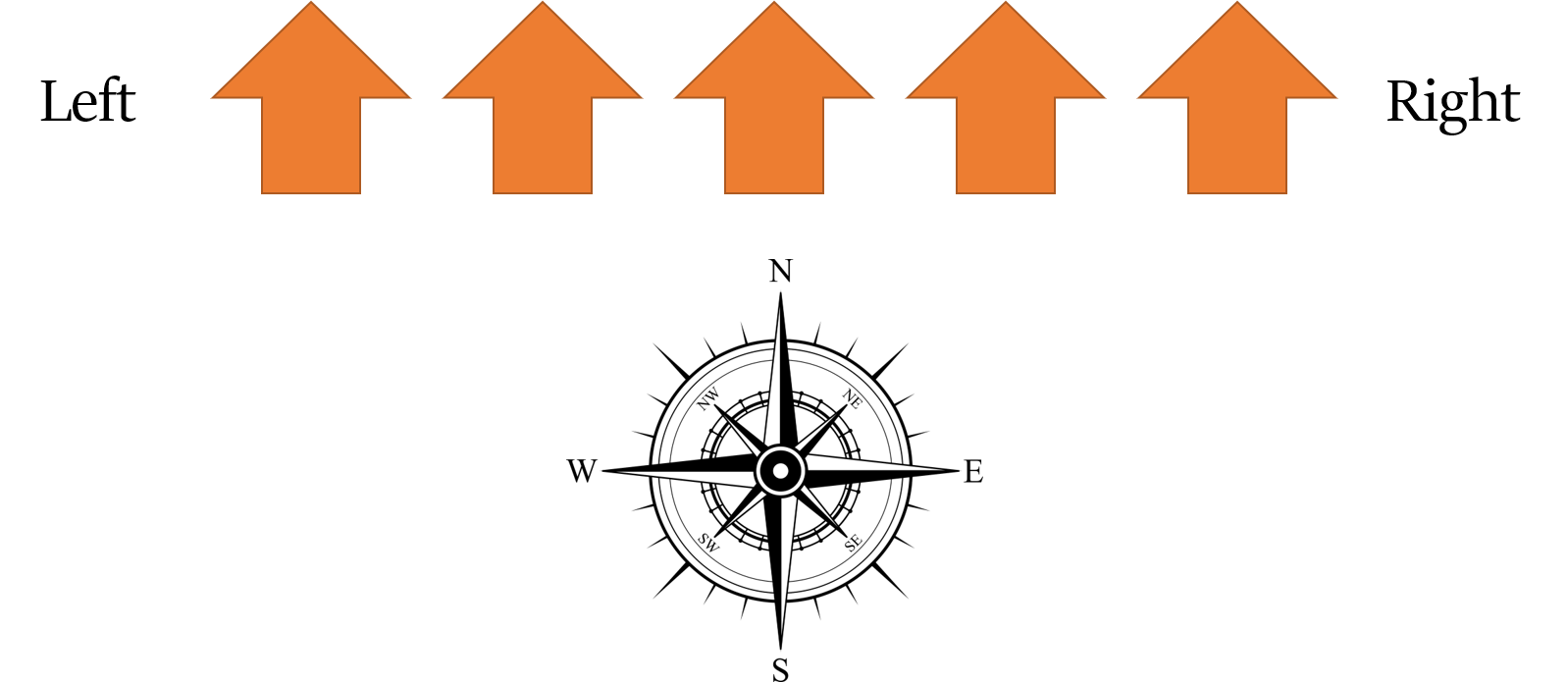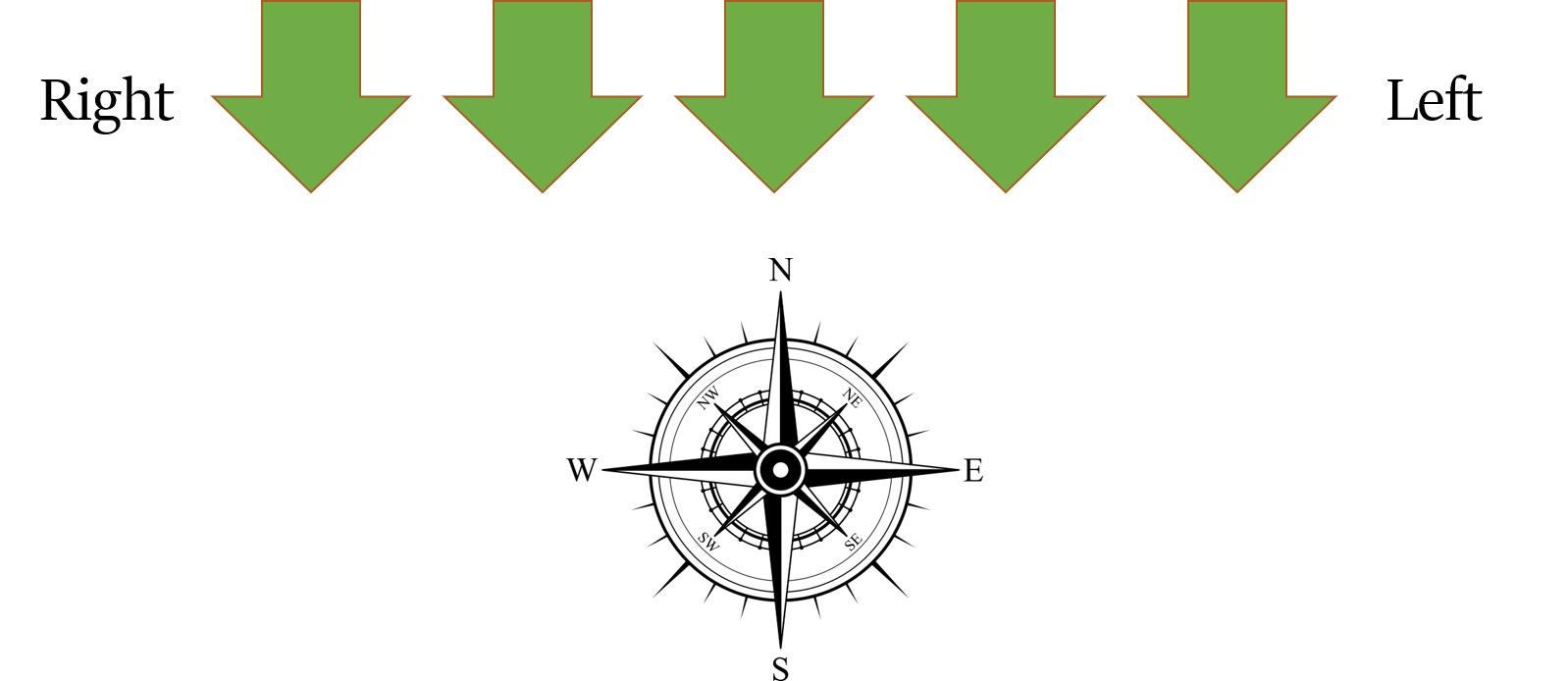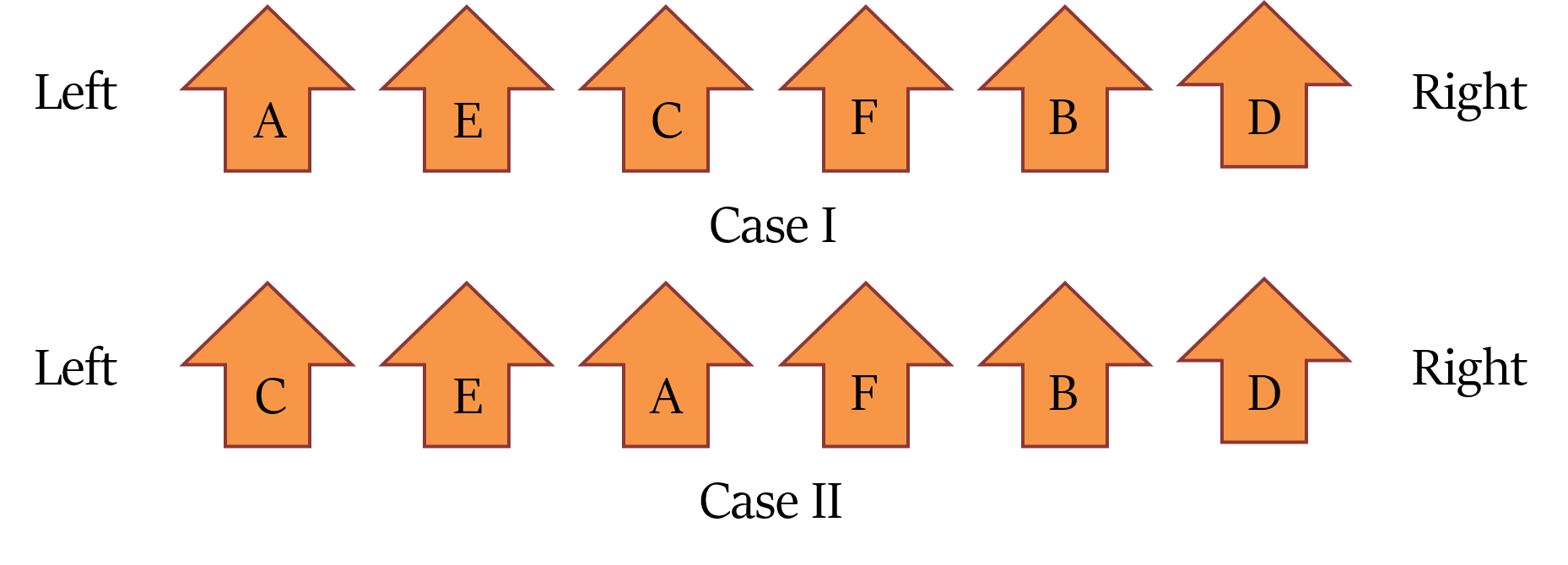Linear Arrangement Puzzles
In linear arrangement, persons/objects are required to be placed in proper order in a straight line.

One is required to identify the exact position of the objects and their positions with respect to one another based on the information given.
Steps:
Step I: Identify the number of objects and their names.
Step II: Use a pictorial method to represent the objects and their positions. Basically, we need to convert the statements given in the question into cognitive notes, so that you won’t need to read the statements again and again. It also decreases chances of any error.
Step III: Decide a hinge around which all the other information may be arranged, if possible. Look out for absolute information rather than relative information.
Step IV: Use the information related to the hinge to fill the missing gaps step by step. Give priority to positive information over negative information (e.g. not).
Step V: If more than one possible arrangement is there, then try to eliminate as many scenarios as possible. But in some questions you will be left with 2 or more possible scenarios/cases even at the end.
Step VI: Answer the question depending on whether you have zeroed down upon one final scenario or there are still many scenarios possible.
The above steps will make more sense when we will consider a few examples.
The linear arrangement puzzle may be one row or two rows based.
One row arrangement
In such an arrangement, objects/persons are placed in a single row.
There are a few concepts that you should be aware of, when it comes to linear arrangement.
Concept 1: Seating direction
If direction of face is not given (or when it’s given that people are facing North), then we should take ourself as a base to determine left and right of the objects/persons (i.e. in such cases our left and right are the left and right of the objects/persons)

If it’s given that people are facing you (or when it’s given that people are facing South), then in such cases our left and right are the right and left of the objects/persons respectively.

Concept 2: ‘immediate’
Consider the following linear sitting arrangement:

Q. Who is to the right of A?
Answer: B, C, D, E
Q. Who is to the immediate right of A?
Answer: B
Let’s see a few examples now.
Q. 6 persons are sitting in a row. They are A, B, C, D, E and F. C is not sitting beside D, who is sitting on the extreme right. E is between A and C. A is not sitting beside F and D. B is between F and D. Who is on the immediate right of A?
(a) B (b) C (c) D (d) E
Explanation:
Step 1: Identify the number of objects and their names.
6 persons are sitting in a row. They are A, B, C, D, E and F.
Step 2: Use a pictorial method to represent the objects and their positions.

Step III: Decide a hinge
D is sitting on the extreme right. This is an absolute information.
We call this absolute information, because it’s not dependent on any other data. That is, it can be filled directly in the diagram.

Step 4: Use the information related to the hinge to fill the missing gaps.
Here, we will give priority to positive information over negative information.
Negative information : C is not sitting beside D; A is not sitting beside F and D
Positive information : B is between F and D

C is not sitting beside D.
A is not sitting beside D.
We can already see in the above figure that, nobody is sitting to the right of D and B is sitting to the left of D.
Step 5: If more than one possible arrangement is there, then try to eliminate as many scenarios as possible.
E is between A and C.
So, two cases are possible:

We know that: A is not sitting beside F.
So, Case II may be eliminated.

Answer: E is on the immediate right of A.
Two rows arrangement
In such arrangement, objects/persons are arranged in two different rows facing each other.

Consider the following linear sitting arrangement:

Q. Who is sitting opposite to F?
Answer: A
Q. Who is sitting diagonally opposite to E?
Answer: F